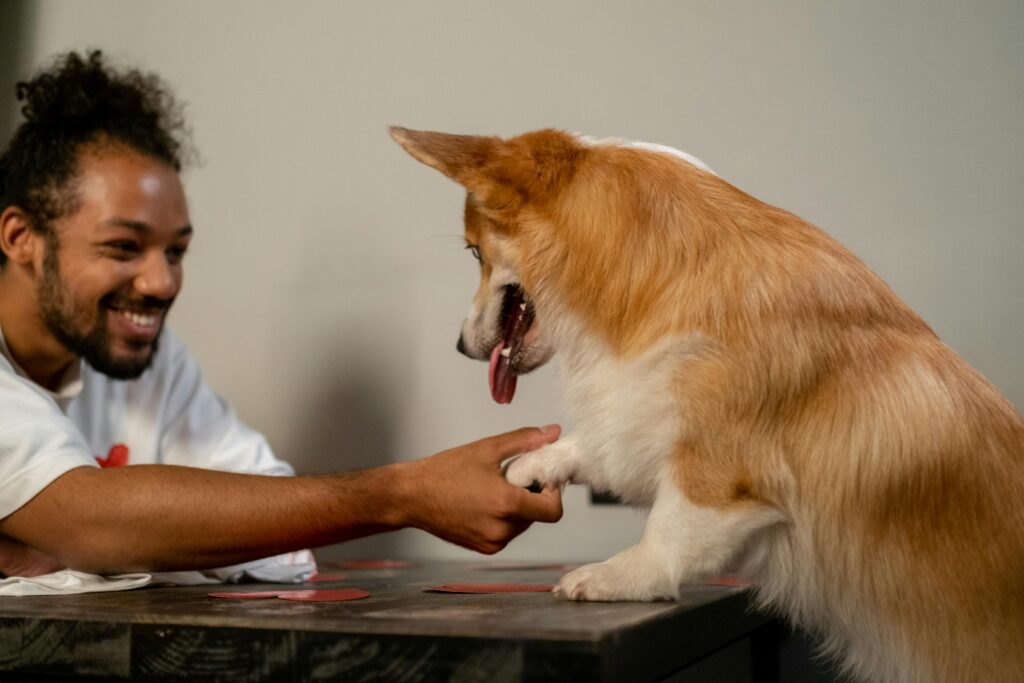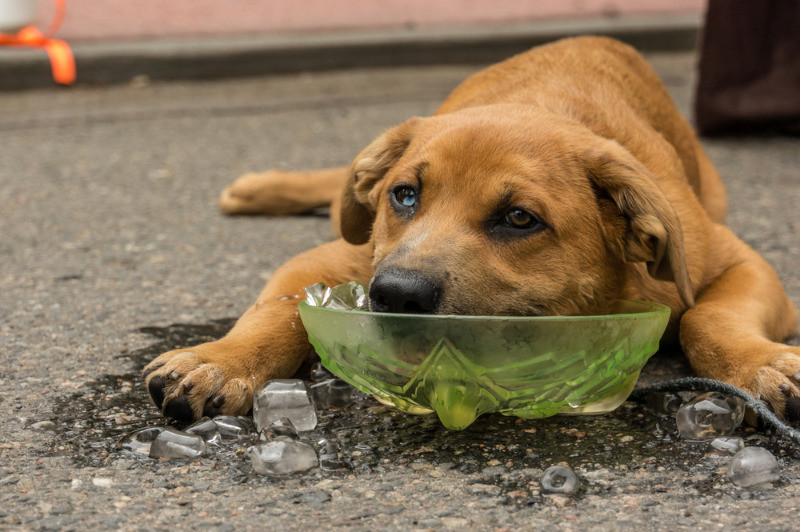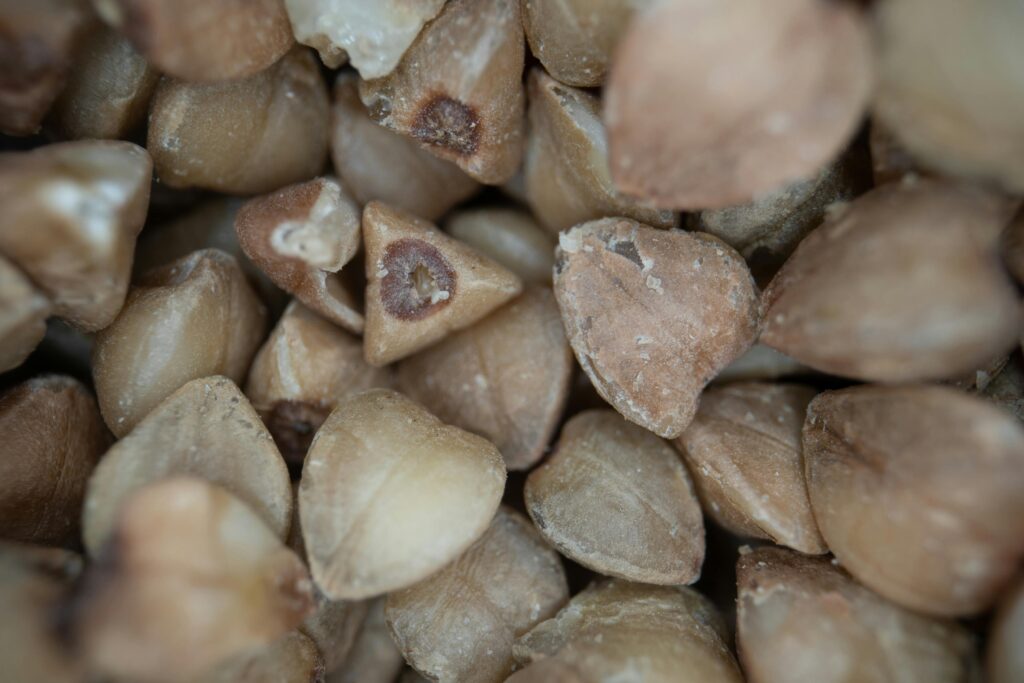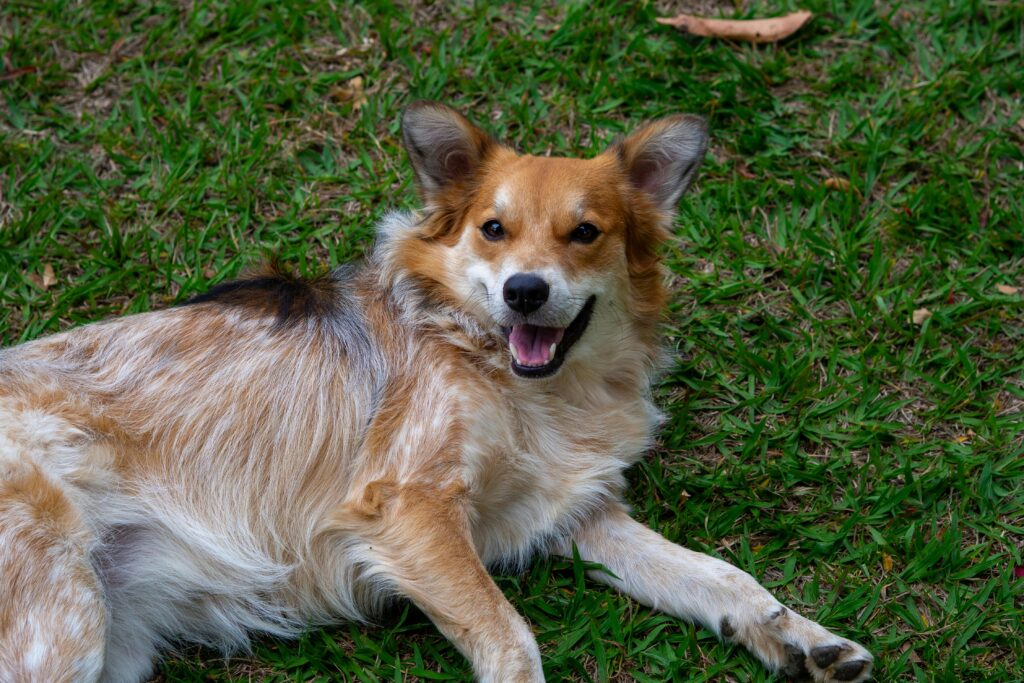Bringing new life into the world is always a magical experience—especially when it’s your beloved dog having her first litter. But for many dog owners, that excitement is laced with anxiety. Is she going to be okay? Will I know what to do? Can I handle it if something goes wrong? These questions are completely natural. Fortunately, by understanding the process and being prepared, you can provide the support your dog needs during this delicate and beautiful journey.
This guide will walk you through everything you need to know—from recognizing pregnancy to creating a safe birthing environment, assisting during labor, and caring for the new puppies. So let’s start from the beginning and work step by step through how to help your dog give birth for the first time.
Understanding the Dog’s Pregnancy
Signs Your Dog Is Pregnant
If you suspect your dog might be expecting, the first step is confirming the pregnancy. While dogs don’t use pregnancy tests like humans do, there are several clear signs that can help you identify if she’s carrying puppies. Around 3 weeks in, you might notice her appetite changing—some dogs eat more, others become pickier. Around week 4, her belly might start to swell, and her nipples can become enlarged or slightly darker. Her behavior might also shift—she could be more affectionate or alternatively, more withdrawn.
A veterinarian can confirm pregnancy with a physical exam, ultrasound, or hormone test. It’s essential to get professional confirmation not only to verify the pregnancy but also to check on the health of both the mother and the developing puppies. Knowing your dog is pregnant early on allows you to begin preparing properly.
Keeping a close eye on her physical changes, emotional state, and appetite will be vital throughout the entire process. Every dog is different, so stay alert to changes in her normal routine.
Stages of Canine Pregnancy
Dog pregnancies typically last around 63 days, just a bit over two months. This short gestation period moves quickly through three distinct stages:
- Early Pregnancy (Weeks 1–3): During this time, you might not notice any obvious signs. However, behind the scenes, the fertilized eggs are implanting and beginning to develop. Keep her routine as normal and stress-free as possible.
- Mid Pregnancy (Weeks 4–6): Now the physical changes start to become noticeable. She may gain weight, her belly might start rounding out, and her appetite can spike. A vet check at this stage can confirm fetal development.
- Late Pregnancy (Weeks 7–9): This is when nesting behavior kicks in. She might start dragging blankets around or digging in her bed. She’ll become more lethargic and may begin producing milk. Now is the time to prepare for labor.
Understanding these stages helps you respond appropriately to her needs and ensures she’s getting the right care at each point in her pregnancy journey.
Preparing for the Due Date
Preparation is everything when your dog is expecting puppies. About two weeks before the due date, you should begin creating a comfortable, quiet, and clean area for her to give birth. This is called the whelping area, and it needs to be a safe space where she feels protected.
Start by gathering the essentials: towels, disposable gloves, clean scissors, antiseptic, a heating pad, and a scale for weighing puppies. Keep your vet’s contact information readily available in case of an emergency. Make sure everyone in the household knows to give the mom space and quiet when her time comes.
One helpful tip is to start taking your dog’s temperature daily during the last week of pregnancy. A dog’s normal temperature is between 101°F and 102.5°F. When it drops to around 98°F, that’s a sign that labor is likely to start within 12 to 24 hours. Being this prepared helps reduce your stress and ensures a smoother birthing process for your dog.
Creating the Ideal Whelping Environment
Choosing the Right Whelping Box
Think of a whelping box as your dog’s delivery room. It’s where she’ll nest, give birth, and nurse her puppies for the first few weeks. You can buy a premade whelping box or create one yourself from a plastic kiddie pool, a wooden box, or a large cardboard container. The key is to make sure it’s big enough for your dog to stretch out comfortably while still having sides high enough to keep the puppies inside.
Line the bottom with layers of old towels, newspapers, or whelping pads. These need to be absorbent, easy to replace, and non-slippery. Avoid anything too soft, like pillows, which can smother small puppies.
Place the box in a quiet, dim, and warm area away from household traffic. A guest bedroom or secluded corner of a living room works well. Dogs naturally seek a den-like area, so think privacy and coziness.
Another important detail? Temperature control. Newborn puppies can’t regulate their body temperature, so keeping the area warm (around 85°F to start) is essential. A heat lamp or heating pad under half of the box can help—this lets the puppies choose between warm and cool areas.
Supplies You’ll Need for the Birth
Having the right tools on hand can make all the difference during delivery. Here’s a comprehensive checklist of what you’ll need:
- Clean towels (lots of them)
- Heating pad or hot water bottle
- Digital thermometer
- Sterilized scissors
- Antiseptic solution (like Betadine)
- Disposable gloves
- Suction bulb or syringe (for clearing puppies’ airways)
- Puppy-safe scale
- Unwaxed dental floss or sterilized string (for tying umbilical cords)
- Notebook or digital tracker for recording puppy weights and times
- Flashlight or headlamp (just in case)
- Your vet’s emergency contact info
Having these items within arm’s reach ensures that if anything unexpected happens, you’re ready to help without scrambling.
Ensuring a Calm and Safe Space
Just like humans, dogs need peace and comfort during labor. Stress can delay or complicate the birth. That means keeping noise to a minimum, avoiding sudden movements, and ensuring that your dog knows this is her special safe space.
Start training her to use the whelping box a week or two in advance. Encourage her to sleep in it, eat near it, and spend time inside. You can do this by placing her favorite blanket and a few toys inside the box. Use treats and soothing encouragement to reinforce positive feelings about the space.
Avoid having children or other pets in the room when labor starts. Your dog may become protective or anxious, and extra distractions will only stress her more. The calmer her surroundings, the more smoothly the birthing process will go.
Recognizing the Signs of Labor
Early Signs of Labor
Knowing when your dog is about to go into labor can save you a lot of last-minute panic. Thankfully, most dogs show clear physical and behavioral signs when labor is near. One of the most consistent indicators is a drop in body temperature. Normally, a dog’s temperature ranges from 101°F to 102.5°F, but about 12–24 hours before delivery, it drops to around 98°F. Start taking her temperature twice daily during the final week of pregnancy to catch this crucial change.
Aside from temperature changes, you may notice nesting behaviors. She might start scratching, circling, dragging blankets, or hiding in closets. This is her instinctive way of creating a safe place to give birth. Some dogs become more clingy and seek out your presence, while others prefer solitude.
You may also observe a loss of appetite, mild vomiting, or restlessness. A clear mucus discharge from the vulva is another early labor sign. Don’t be alarmed if she pants or seems uncomfortable—this is all part of the first stage of labor, where the cervix is dilating and contractions are starting to build.
While it’s hard to predict exactly when labor will begin, recognizing these signs gives you a valuable heads-up to be ready. Keep her calm, avoid introducing new stimuli, and double-check that all your supplies are ready. She’ll sense your calm energy, which can help her stay more relaxed.
Active Labor and What to Expect
Once your dog enters active labor (Stage 2), the real action begins. This is when you’ll start seeing visible abdominal contractions and, eventually, puppies. This stage can last anywhere from 3 to 12 hours, depending on the size of the litter and whether it’s her first time. First-time mothers may take longer.
A puppy should be delivered every 30 to 60 minutes, and the entire litter should arrive within 6 hours, though larger litters may take a bit longer. Keep track of the time between each birth. If more than 2 hours pass without a puppy, it’s time to call the vet.
Each puppy is typically born encased in a thin sac (the amniotic sac), which the mother usually tears open with her teeth. She will also chew through the umbilical cord. If she doesn’t, you’ll need to step in (we’ll cover how shortly). Puppies may be born head- or feet-first—both are normal.
It’s common for the mom to eat the placenta, which contains nutrients and hormones. While this is natural, limit her to just one or two placentas, especially with large litters, to prevent upset stomach or diarrhea.
Your role during active labor is to observe and be supportive. If she looks panicked or tired, speak in a soft, reassuring voice. Let her handle things on her own as long as everything progresses normally. Don’t hover—your presence should be calming, not intrusive.
When to Call the Vet
Even though dogs are surprisingly self-sufficient during birth, complications can arise, especially with first-time mothers. It’s important to recognize when medical intervention is necessary to protect both mom and puppies.
Call your vet immediately if:
- Your dog has been pushing for over 30 minutes without delivering a puppy.
- More than 2 hours pass between puppies.
- A puppy appears stuck in the birth canal for longer than 10 minutes.
- There is a foul-smelling or green-black discharge before any puppies are born (this could signal placenta detachment).
- The mother seems extremely fatigued, disoriented, or in pain.
- Labor doesn’t begin within 24 hours of a significant temperature drop.
- She fails to go into labor 70+ days after mating.
Having your vet’s number easily accessible is essential. If it’s after hours, know the nearest 24/7 animal hospital. Some breeders even choose to have a vet on call or present for first-time births. Don’t feel guilty about seeking professional help—it’s always better to be safe.
Being mentally prepared for the possibility of a C-section or emergency can reduce panic. Your calm, informed action could be the difference between life and death for a puppy or the mother. Stay vigilant, yet relaxed, and trust your instincts when something doesn’t feel right.
Assisting During the Birth Process

How to Help Without Intervening Too Much
Your instinct might be to jump in and assist, but less is more when it comes to helping your dog give birth. She’s hardwired with instincts passed down from generations of canine mothers. Most of the time, your main job is to observe, not intervene.
Let her take care of breaking the sacs, cleaning the puppies, and chewing the umbilical cords. That’s her way of bonding with the pups and triggering their first breaths. Only step in if you notice she’s not responding to a puppy or seems overwhelmed.
For example, if a puppy is still enclosed in the sac and she doesn’t break it within 60 seconds, gently tear the sac open with your fingers and clear the fluid from the puppy’s nose and mouth using a bulb syringe or soft cloth. Rub the puppy with a towel to stimulate breathing.
If a cord isn’t chewed through, tie a piece of clean floss about an inch from the puppy’s belly and cut it on the side away from the puppy. Dab a bit of antiseptic on the stump to prevent infection.
Between deliveries, offer the mom water or a quick trip outside to relieve herself. Just make sure she doesn’t leave for too long in case the next puppy is on the way.
And most importantly? Stay calm. Your dog will feed off your energy. If you’re frantic, she may become anxious, which could slow labor or create complications. Think of yourself as the birth coach—present, prepared, but only stepping in when absolutely necessary.
What to Do If a Puppy Gets Stuck
Despite nature’s best intentions, sometimes a puppy gets stuck during delivery. If you see a puppy partially out but not progressing after a few minutes of pushing, you may need to assist gently.
First, put on sterile gloves. Grasp the puppy gently but firmly with a clean towel. If the head or feet are visible, apply gentle traction downward, toward the mother’s hind legs and not straight out. Don’t pull hard or twist. Be patient—sometimes it takes a bit of coordinated pushing from the mom and pulling from you to work.
If the puppy doesn’t move or seems lodged, stop and call the vet immediately. Trying to force a delivery can cause trauma to both mom and puppy.
Sometimes, stuck puppies are caused by:
- Malpresentation (like a sideways pup)
- Large puppy size relative to the birth canal
- Uterine inertia (weak or stalled contractions)
If you’ve delivered the puppy and they’re not breathing, clear the airway, then rub vigorously with a towel. You can gently swing the puppy downward (supporting the neck and back) to help clear fluids. A warm heating pad can help stimulate blood flow too.
Don’t feel like a failure if you need help. Even experienced breeders run into complications. What matters most is acting quickly and safely when help is needed.
How to Cut Umbilical Cords and Clean the Pups
While mother dogs usually take care of cutting the umbilical cords and cleaning their newborns, sometimes they need a little help—especially if they’re overwhelmed or if it’s their first litter. Knowing how to step in safely and correctly is essential to avoid complications.
When a puppy is born and the mother doesn’t chew the umbilical cord within the first couple of minutes, you’ll need to do it. Start by tying the cord about one inch away from the puppy’s belly using unwaxed dental floss or sterile thread. Then, tie another knot about half an inch farther from the first one. Between those two knots, use sterilized scissors to cut the cord cleanly. Dip the cut end in antiseptic iodine to prevent infection.
Be cautious—never pull on the cord or cut it too close to the puppy’s abdomen. This can lead to hernias or even internal bleeding. And always make sure your hands and tools are clean to avoid introducing bacteria.
Once the cord is taken care of, turn your attention to cleaning the puppy. If the mother hasn’t licked it clean or removed the amniotic sac, gently rub the puppy with a warm, dry towel. This not only cleans the pup but stimulates blood flow and encourages breathing. You may hear a sneeze or cough as they clear their lungs—this is a great sign!
It’s also helpful to keep track of the birth order, time of birth, and any noticeable issues in a notebook or app. Weigh each puppy on a small digital scale and record it. This will help you monitor their growth and identify any pups who might need extra attention.
Helping with cords and cleaning isn’t just about hygiene—it’s about giving each puppy the best possible start to life.
Post-Birth Care for the Mother and Puppies
Helping the Mother Bond with Her Puppies
After the adrenaline of labor subsides, the real work begins—ensuring the mother bonds with her puppies. This bond is essential for their survival and long-term health. Newborns need constant warmth, feeding, and cleaning, and only their mother can provide all of that instinctively.
Right after birth, allow the mother time and space to sniff, lick, and nurse her pups. Licking helps stimulate their circulation, breathing, and urination. Even if she seems tired, most dogs will start nursing within an hour after the last puppy is born. If she doesn’t, gently place a puppy near her nipple to initiate feeding.
Sometimes, first-time moms can feel overwhelmed or confused. They might ignore their puppies or seem unsure what to do. Stay calm and encourage contact, but avoid forcing interactions. Too much interference can make her more anxious. Instead, sit nearby, talk to her softly, and offer a reassuring presence.
If she’s completely ignoring the puppies or appears aggressive, consult a vet immediately. You may need to intervene and bottle-feed the puppies temporarily while the situation is assessed.
Also, make sure the mother has everything she needs within reach—food, water, and a chance to relieve herself. She may not want to leave her puppies for long, so keep her essentials nearby.
Remember, bonding isn’t just emotional—it’s survival. A strong maternal bond ensures the pups are fed, kept warm, and protected. Your job is to gently guide and support that bond, especially in those critical first hours.
Monitoring the Puppies’ Health
Puppies are fragile, especially in the first few weeks. Close observation can mean the difference between life and death during these early days. Newborn pups should be eating every 2 hours, gaining weight daily, and staying warm. Cold, quiet, or underweight puppies are red flags.
Use a digital scale to weigh each puppy once a day. Healthy puppies will gain 5–10% of their body weight daily. Keep a record in a journal or spreadsheet to track trends. If a puppy isn’t gaining or appears to be losing weight, it may not be latching on properly or could be getting pushed away by stronger littermates.
Signs of a healthy puppy include:
- Regular nursing
- Warm skin
- Loud cries when hungry
- Rounded belly (not bloated or overly thin)
- Smooth, clean skin
On the other hand, a puppy who feels cool to the touch, is lethargic, constantly crying, or struggling to breathe may need urgent care. Hypothermia and dehydration are the biggest threats in the first 48 hours. Make sure the whelping area remains warm (around 85°F for the first week) and that weaker pups are not being ignored.
If a puppy appears ill or isn’t thriving, don’t hesitate to contact your vet. They may suggest supplemental feeding with puppy formula using a syringe or bottle.
The mother’s behavior is also a good indicator—if she rejects a puppy or refuses to nurse it, something may be wrong. Trust your instincts and act quickly. Every minute counts in neonatal care.
Feeding and Cleaning Guidelines
Feeding and cleanliness go hand-in-hand for healthy newborn pups. For the first three to four weeks, puppies rely entirely on their mother’s milk, which is rich in antibodies that boost immunity. Make sure the pups are rotating nipples and all getting a fair share of feeding. Larger pups sometimes dominate, so step in to help smaller ones latch on if needed.
In cases where the mother isn’t producing enough milk or refuses to nurse, you’ll need to bottle-feed the pups using a canine milk replacer (never cow’s milk—it can cause digestive issues). Feedings should happen every 2–3 hours, including overnight. Use a special puppy bottle or syringe, keeping the puppy upright (never on its back) to prevent aspiration.
Cleaning is another vital task. Normally, the mother stimulates the puppies to eliminate waste by licking their bellies and rear ends. If she’s not doing this, you’ll need to use a warm, damp cloth to gently rub the area after feeding. This should mimic the sensation of licking and encourage them to go.
You’ll also need to clean the bedding frequently. Puppies have weak immune systems and are susceptible to infections. Swap out towels and pads at least twice a day, or more if soiled. Keep a disinfectant (pet-safe) handy to clean the whelping box without harsh chemicals.
At around 3–4 weeks old, you can begin weaning by introducing a puppy mush made from puppy kibble soaked in water or formula. By 6–8 weeks, they should be fully transitioned to solid food.
Clean puppies are healthy puppies, and a well-fed litter is a happy litter. Stay consistent and gentle, and you’ll guide them smoothly into the next stage of life.
Conclusion
Helping your dog give birth for the first time can be a nerve-wracking experience, but it’s also one of the most rewarding. With the right preparation, knowledge, and mindset, you can be the calm, supportive presence your dog needs during labor and beyond. Remember, your job is to create a safe, quiet environment, recognize the signs of labor, provide gentle assistance when necessary, and ensure both mom and puppies are thriving post-birth.
While dogs are remarkably self-sufficient creatures, being proactive can make a huge difference, especially for a first-time mom. From knowing how to cut an umbilical cord to spotting the early signs of complications, your involvement plays a key role in this natural process. Stay organized, observe closely, and never hesitate to call a vet if anything feels off.
And once those tiny paws arrive? That’s when the real magic begins. You’ll get to witness their first steps, hear their little squeaks, and see their bond with their mother grow stronger each day. So be present, be patient, and be proud—you’ve just helped usher new life into the world.
FAQs
1. How long does it take for a dog to give birth to all her puppies?
The entire birthing process can take anywhere from 3 to 12 hours, depending on the size of the litter. Typically, there should be 30–60 minutes between each puppy. If more than two hours pass between births, contact your vet immediately.
2. Should I let my dog eat the placentas?
It’s natural for dogs to eat the placentas—they contain nutrients and hormones. However, it’s best to limit her to one or two, especially in larger litters, as too many can cause stomach upset or diarrhea.
3. Can I touch the puppies right after they are born?
Yes, you can touch the puppies if necessary, especially to assist with cleaning or weighing. However, be gentle, use clean hands or gloves, and avoid over-handling them in the first few hours. Let the mother bond with them naturally.
4. How can I tell if a newborn puppy is sick?
Warning signs include constant crying, low body temperature, lethargy, difficulty nursing, or not gaining weight. Healthy puppies should be warm, active when awake, and nurse frequently. If you notice any of these issues, consult your vet immediately.
5. When should I start weaning the puppies?
Start weaning at around 3 to 4 weeks of age. Introduce them to soft puppy food or a puppy formula mush. By 6 to 8 weeks, they should be fully transitioned to solid food and ready for their new homes soon after.
Please don’t forget to leave a review.




